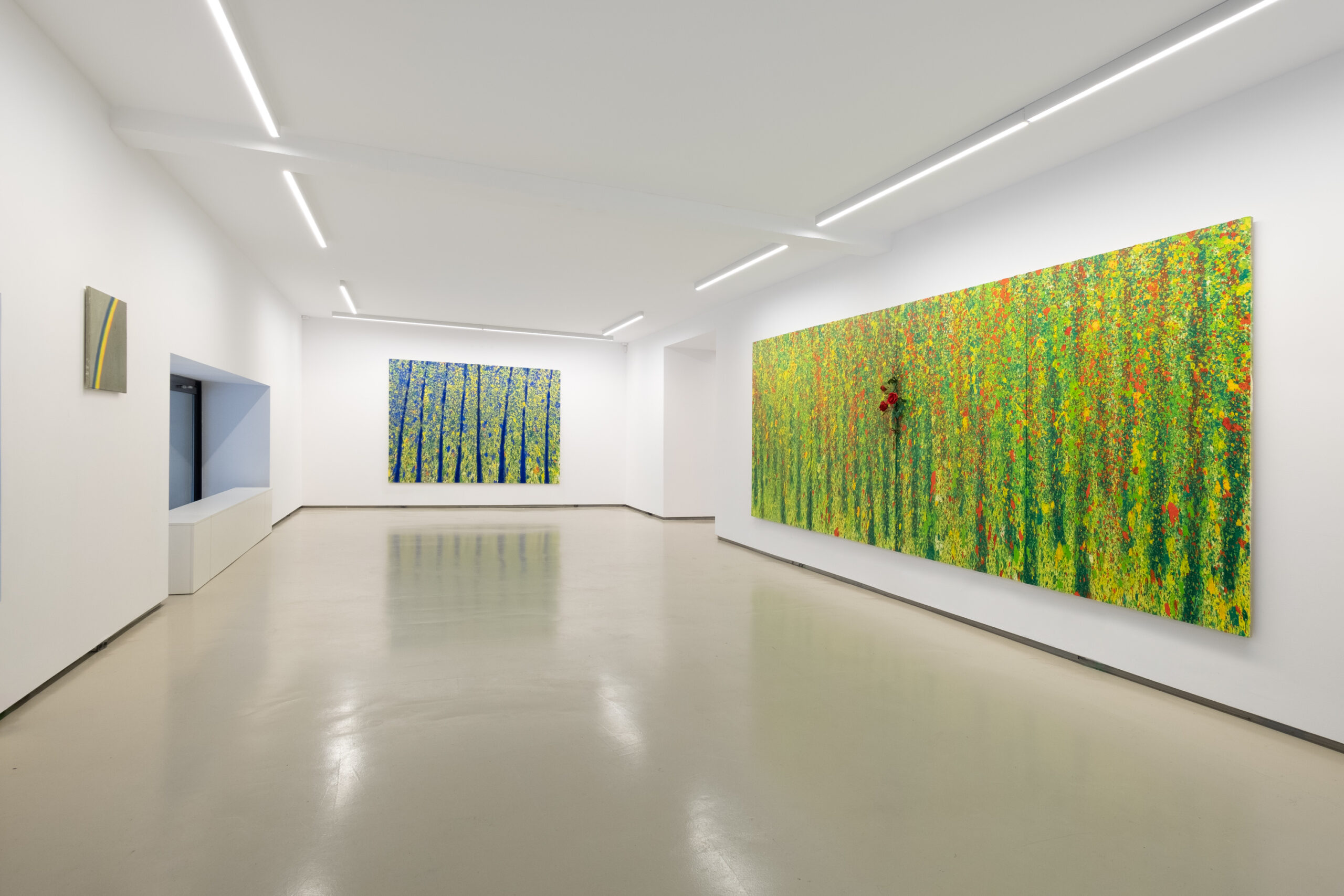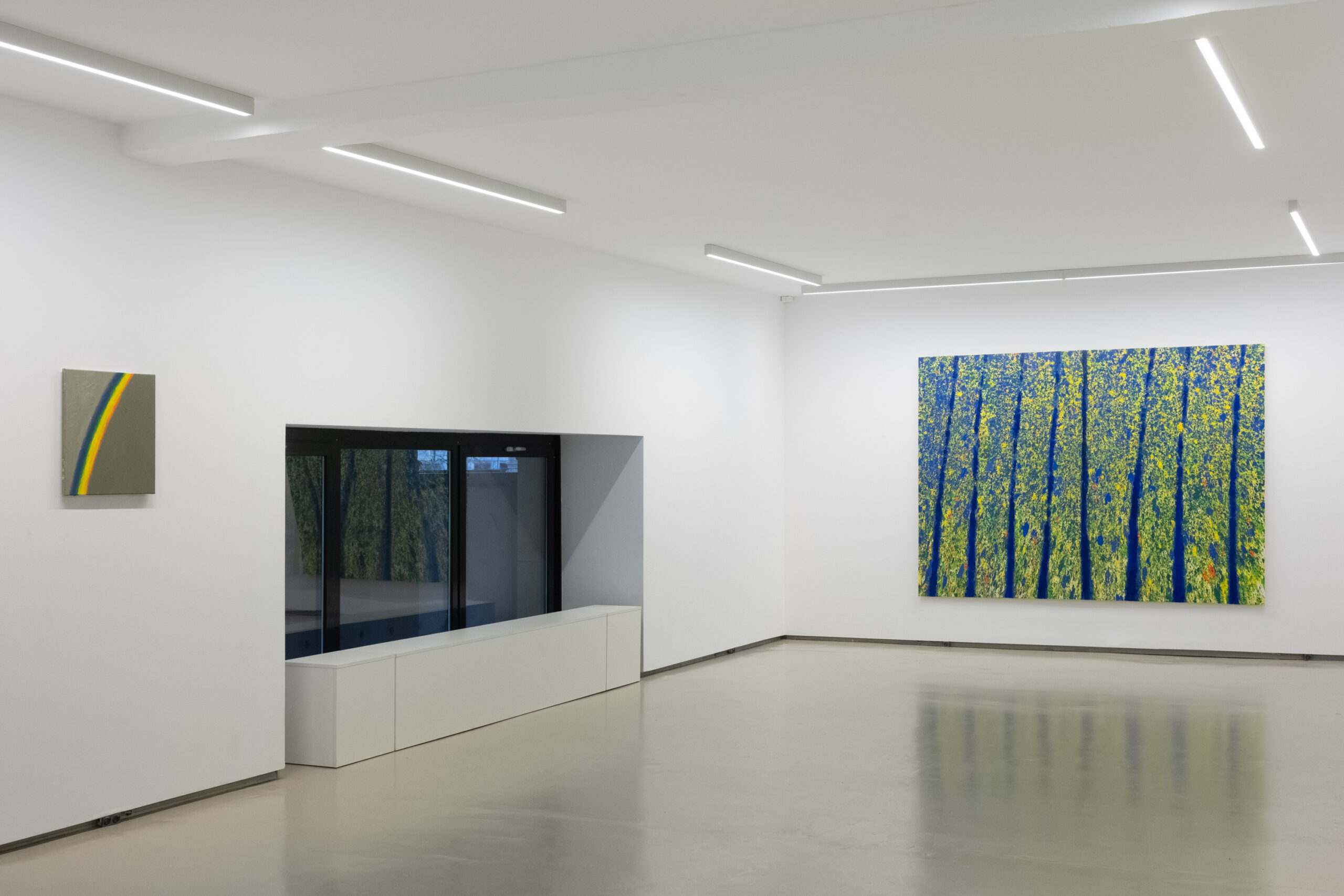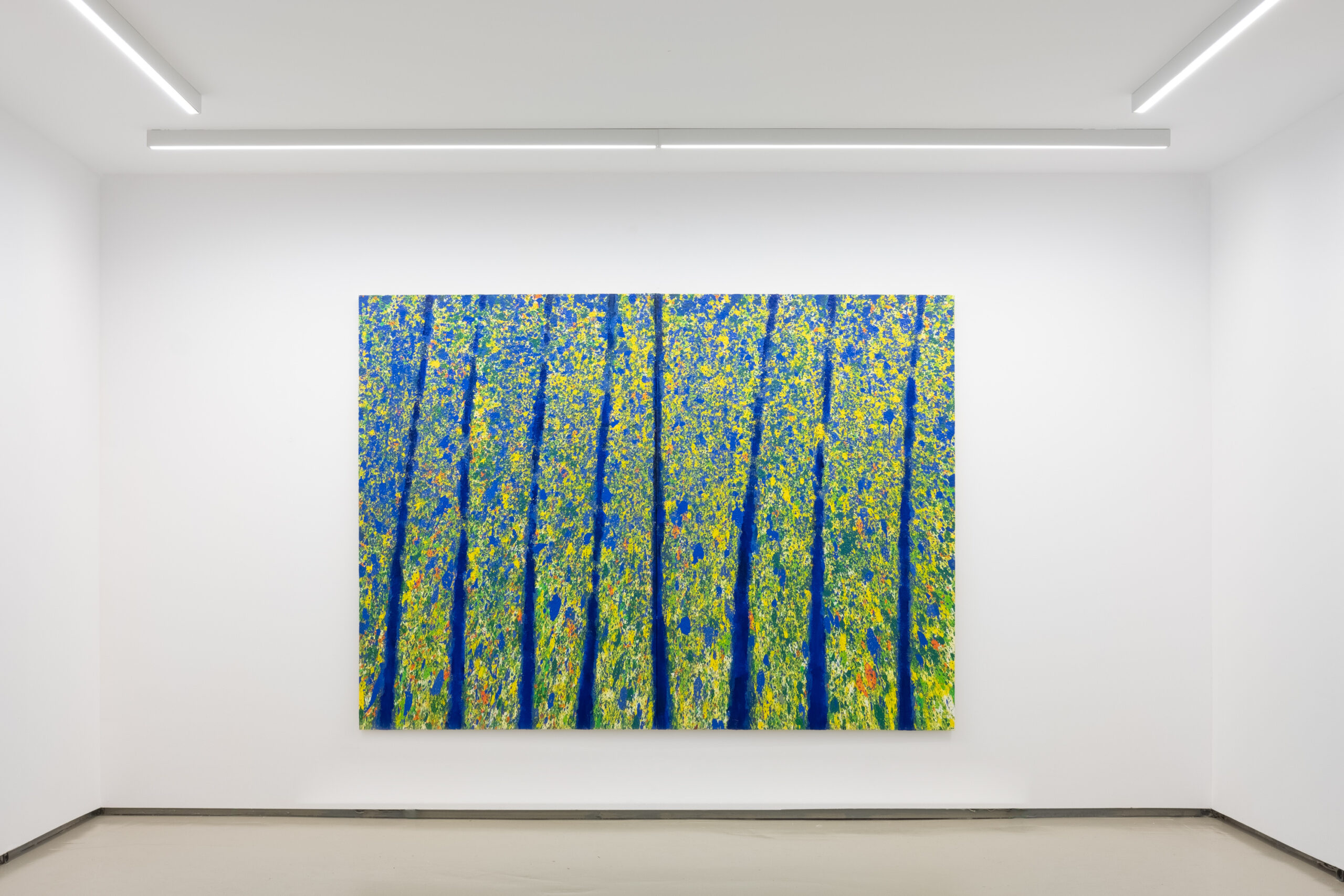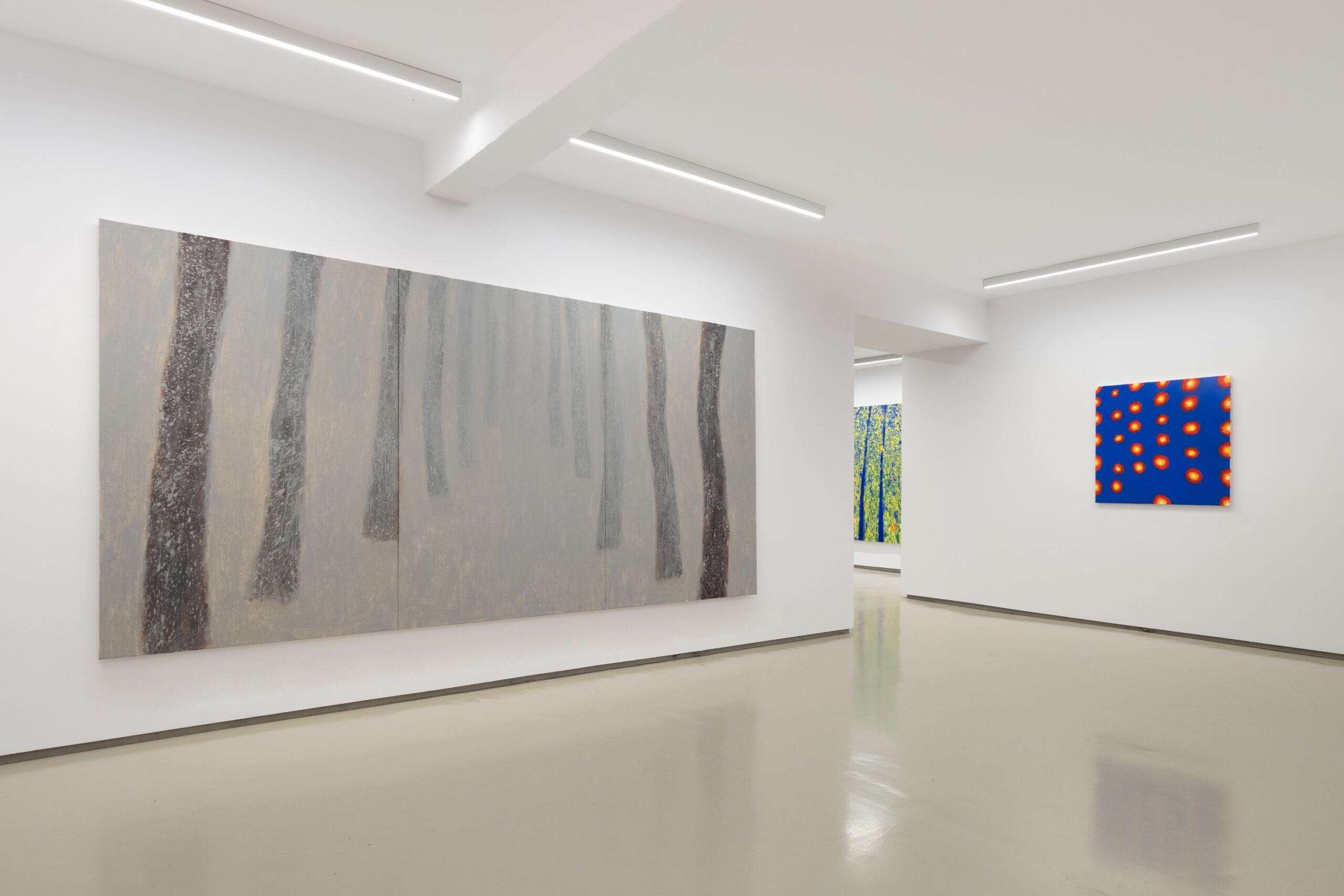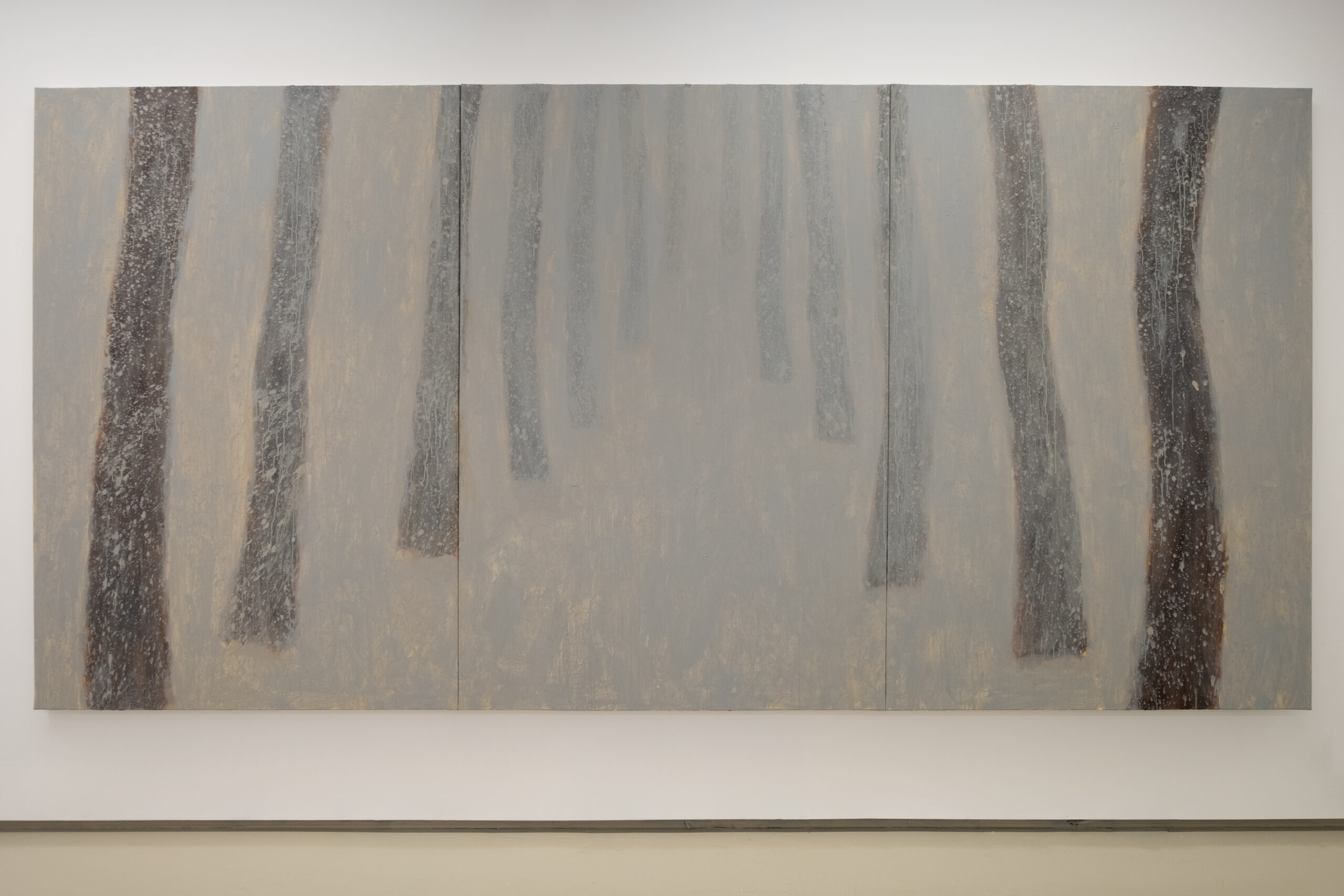Leon Tarasewicz
March 10 – April 28, 2023
The second solo exhibition of Leon Tarasewicz at the Galeria Monopol presents the artist’s latest paintings, created specially for this occasion. The pictures, as the exhibition itself, do not have titles. This is a conscious decision, taken by Tarasewicz at the very beginning of his artistic path. He wrote, “I could never bear any titles or writing on paintings. This is something I’ve never done, and such things always disturb me when I look at a picture, which should always come down to painting and only painting. Let’s leave words where they belong”.
Leon Tarasewicz’s work therefore needs no words. Through painting, he encourages people to admire the beauty of nature. To let it sink in, to enter a state of submersion, in which we forget the boundaries separating our bodies from the environment around us. These paintings are landscapes, but the represented forms have been reduced to the simplest means of expression. They are compositions based on conventional shapes and energetic colours. Stories of being in nature as well as observing it from a distance, in random situations. For example, when driving along a clearway and watching, through the car window, intersecting rainbows. Apart from the beauty which most of us admire, the landscape sometimes hides secrets and stories that are not easy to understand. In these cases, nature reveals its heterogeneity, becoming the setting and witness to dramatic events.
Leon Tarasewicz lives in his home village of Waliły in Podlachia. In his recent paintings, he refers to the complex history of the region he comes from. Past religious, ethnic and cultural conflicts are themes that have previously appeared in the artist’s work. The migrant crisis on the Polish-Belarusian border puts them now in a new context. The artist observes what is happening around him and turns to abstraction, the visual language he knows best. He treats landscape not only as a proof of the power of nature and its domination over people, but also as a kind of commemoration of those who are no longer with us. Besides, Tarasewicz uses it to look for traces of previous generations and their life histories. In this situation, words often become vulnerable, so perhaps images can come to their aid.
Franciszek Smoręda
